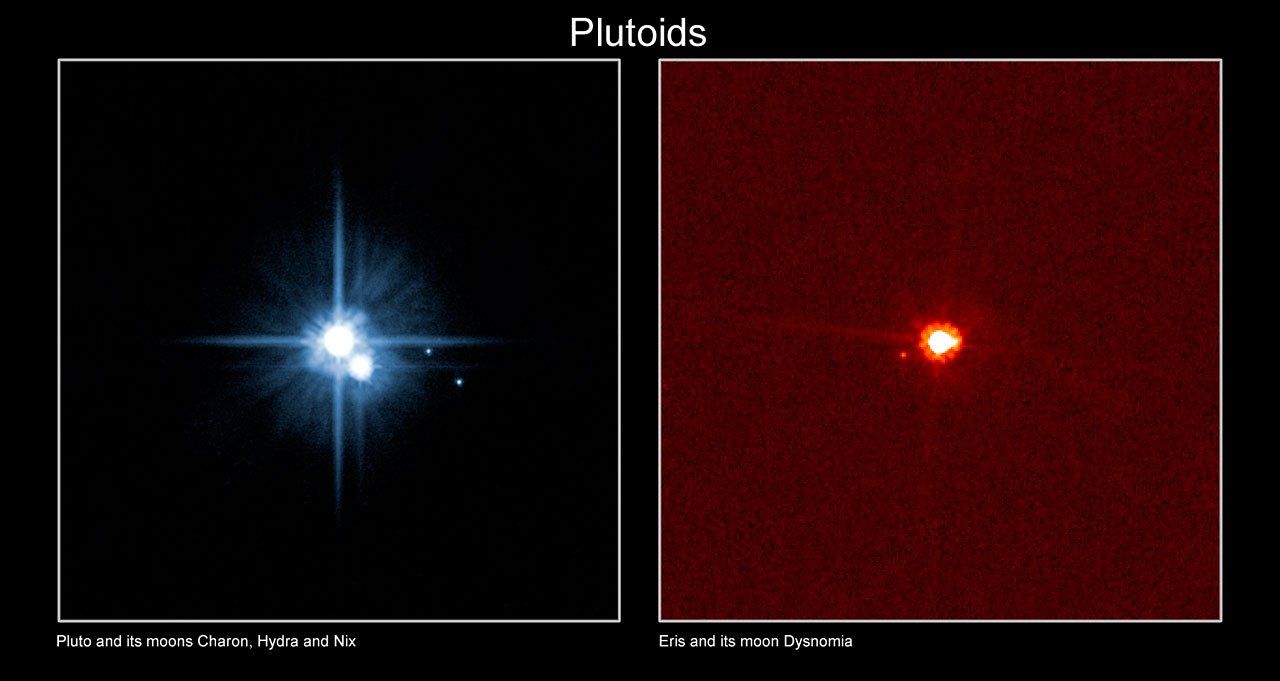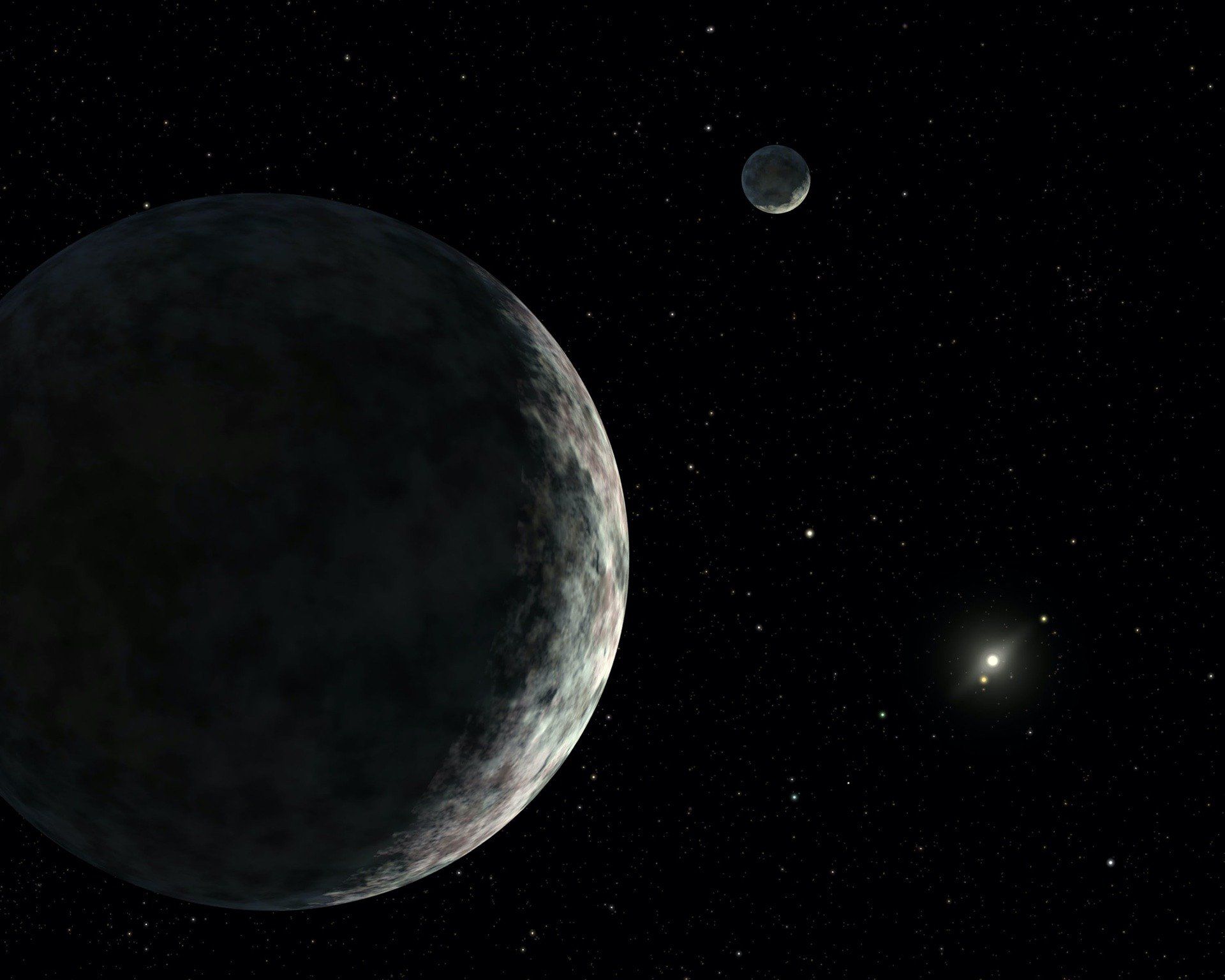This web page is created within BALTICS project funded from the European Union’s Horizon2020 Research and Innovation Programme under grant agreement No.692257.
Eris
Eris is an object that literally toppled Pluto from planetary status. 136199 Eris is the most massive and second largest dwarf planet in the solar system, with one year lasting 558 Earth years.
The cold and distant world was first photographed in 2003 with the 1.2 m Palomar Observatory Telescope. Initially, the dwarf planet was not noticed in the pictures. The finding was confirmed only in January 2005, when Palomar’s images were re-examined. At that time, the object was officially called 2003 UB313, but the discovery team informally called it Xena – a female warrior in the TV series of the same name. The data obtained from the research showed that the object is even larger than Pluto, and it was proposed to give it the status of the tenth planet of the solar system.
Eris is named after the goddess of strife and chaos depicted in ancient Greek mythology and perfectly illustrates the situation faced by astronomers around the world when some demanded a revision of the planet’s criteria and declare Eris and Pluto as dwarf planets, while others insisted that Pluto and possibly Eris should maintain planetary status.
The diameter of the Eris is about 2,300 km, so it is slightly smaller than Pluto. However, it is about 27% more massive than Pluto.
The orbit of Eris is inclined at 44o tilt relative to the ecliptic plane in which the planets of the solar system orbit. The orbital shape is a stretched ellipse. At its nearest point, Eris is 38 astronomical units (5.8 billion km) away, and at its farthest point, 98 astronomical units (14.6 billion km) from the Sun. The last time the dwarf planet was closest to the Sun or perihelion was in 1698, but it reached its farthest point in 1977. Currently, Eris and its moon are one of the most distant known objects of the solar system. One day on Eris lasts about 25 Earth hours.
The surface of the dwarf planet has a very high reflectivity or albedo – 0.96, which is associated with the frost that forms on the surface of Eris as it moves away from the Sun and the gases forming the thin atmosphere condense and fall to the surface. The surface temperature ranges from -217o C in the perihelion to -243o C at the farthest point of the orbit.
It is likely that the internal structure of Eris is similar to that of Pluto, a massive core of hard rocks surrounded by a mantle of tens or hundreds of kilometers of water ice. It is possible that on this dwarf planet, part of the water closer to the nucleus is in a liquid state.
Eris has one moon – Dysnomia, which in ancient Greek mythology is the daughter of Eris and symbolizes lawlessness. Its diameter is about 700 km.
The flight to Eris using Jupiter’s gravitational maneuver, as in the case of the Voyager and New Horizons missions, would take about 25 years.




















